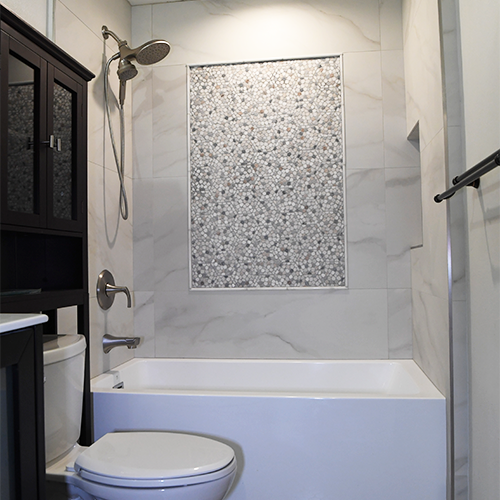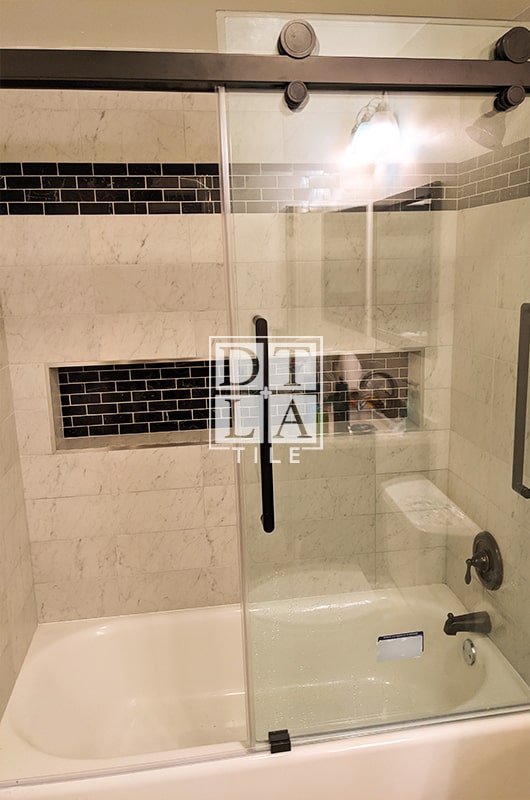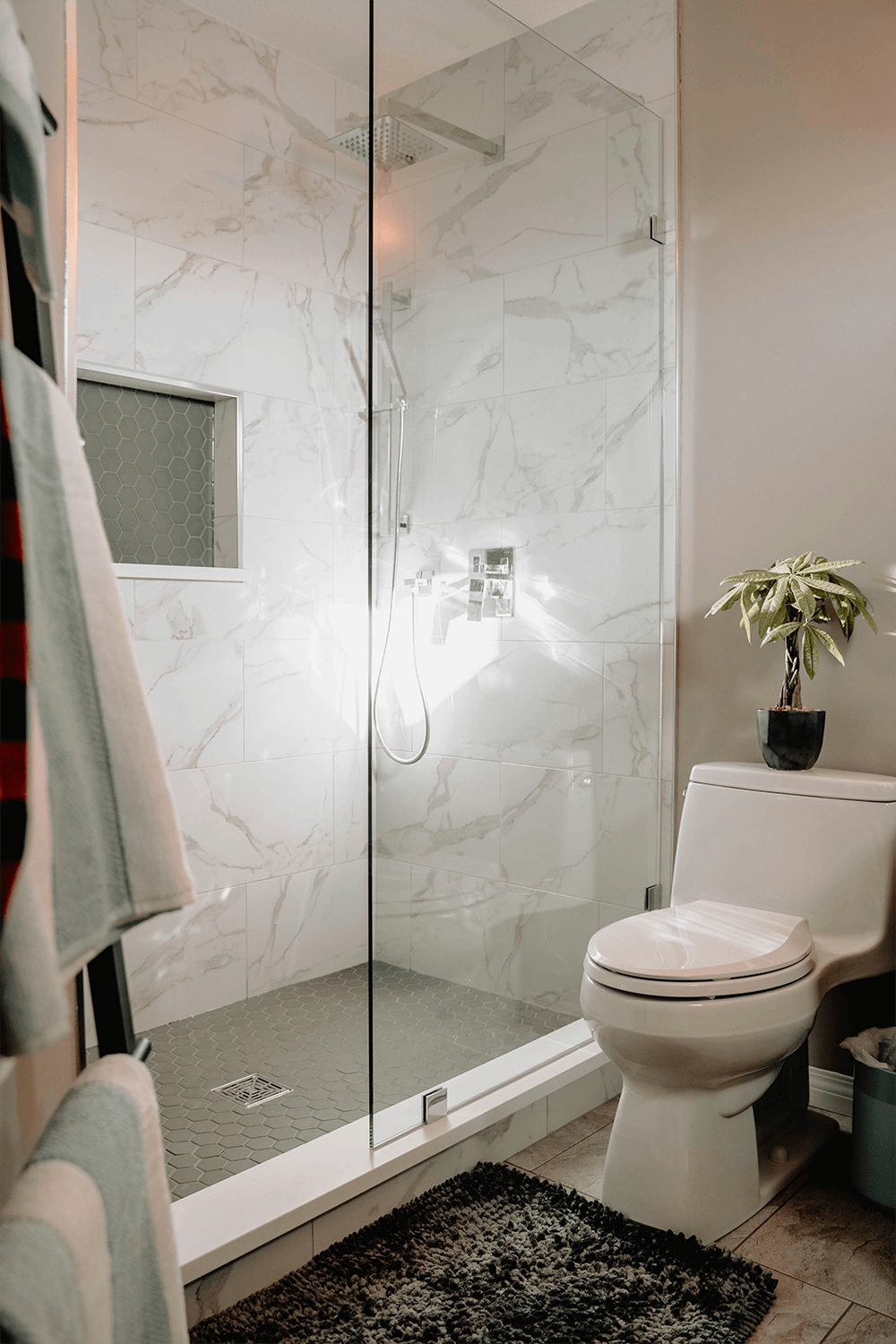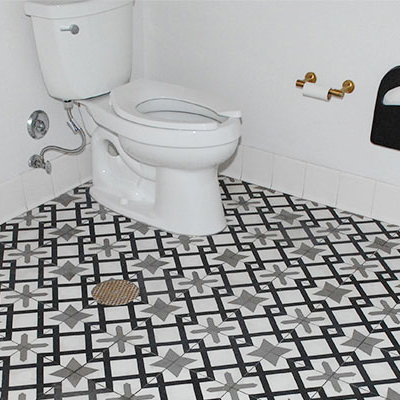
Elevate Your Shower Experience: The Art of Bathroom Niches and Ledges
You step into the shower after a long day, ready to wash away the day’s stress. But, instead of fumbling around for your shampoo or knocking over half-empty bottles, everything you need is right there, within arm’s reach. That’s the magic of well-designed bathroom niches and ledges – the unsung heroes of a truly blissful shower experience.
In this exploration, we’re unraveling the secrets behind turning your shower space into a haven of convenience and style. We’re not talking about just shelves; we’re diving into the art of crafting the perfect nook for your essentials. So, grab a towel and get ready to discover how these small, thoughtful details can make a big splash in your daily routine.
What is a Shower Niche?
A shower niche is a purposefully designed, recessed shelf or compartment built into the wall of a shower or bath enclosure. Its primary function is to provide a convenient and organized space for storing bath products such as shampoo, conditioner, soap, and other toiletries. Shower niches are crafted to be seamlessly integrated into the wall, offering a sleek and practical solution to keep your shower essentials within easy reach.
These niches are typically installed during the construction or remodeling phase of a bathroom. They can be customized to suit personal preferences regarding size, height, and location within the shower space. The idea is to enhance the overall functionality of the shower area while maintaining a clean and uncluttered appearance.
Labels and Dispensers: Simplifying the Search
Ever been half-asleep in the morning, desperately trying to find the shampoo while the shower water turns colder by the second? We’ve all been there. This is where labels and dispensers come in. They’re like the trusty sidekicks in a quest for the perfect shower, making sure you not only find what you need but also do it with a touch of flair.
Labels are like the nametags at a party; they introduce each product with a clear identity. No more accidental face wash in your hair – labels are the superheroes that save you from those early morning mix-ups, making your shower experience smoother and a tad more organized.
Dispensers take the convenience game up a notch. Ever tried opening a shampoo bottle with wet hands? It’s like trying to wrestle an octopus. Dispensers are the sleek solution to this daily struggle. A simple press, and voila! It’s like having a personal assistant in your shower, making the whole process smoother, quicker, and a lot more enjoyable.
Beyond Shampoo: Types of Bathroom Niches
Diving into the world of bathroom niches reveals a spectrum of options that go beyond mere functionality, offering a touch of personalization to your shower space. Tiled niches, in particular, come in three variations, each with its own set of characteristics and considerations:
Custom Tiled Shower Niche
This niche type involves constructing a framed box between wall studs, covering it with tile backer board, waterproofing, and finally, tiling. While it may be the most costly and time-consuming option, it offers the flexibility of being customized to any size. Despite the challenges, the end result is a niche tailored precisely to your needs, making it a worthy investment for those seeking a bespoke touch in their shower space
Custom Horizontal Tiled Shower Niche
For those envisioning a horizontally oriented niche spanning two or more stud bays, the custom horizontal tiled shower niche is the answer. However, this design requires cutting away sections of wall studs, demanding structural reinforcement during construction. While it shares the cost and time challenges of its custom vertical counterpart, the horizontal niche adds a unique design element, making a statement in your shower space.
Prefab Niche, or Preformed Shower Niche
If simplicity and efficiency top your priority list, the prefab niche is a game-changer. Available in plastic, foam board, or stainless steel, these preformed niches are designed to be easily installed and waterproofed. While they come in standard sizes, their hassle-free installation makes them an attractive option for those seeking a functional and stylish niche without the complexities of custom construction.
5 Most Popular Bathroom Niche Designs for 2023
As we step into the design landscape of 2023, bathroom niches are evolving into stylish focal points that seamlessly blend form with function. Here are the top five bathroom niche designs that promise to dominate the trends this year:
Minimalist Alcove Niches
Embracing the “less is more” philosophy, minimalist alcove niches are characterized by clean lines and uncluttered surfaces. These niches are seamlessly integrated into the shower space, offering a sleek and modern look. The simplicity of the design allows for easy customization, making it a favorite for those seeking a timeless and understated aesthetic.
Mosaic Accent Niches
Elevating the artistry of bathroom design, mosaic accent niches are capturing attention with their intricate patterns and vibrant color schemes. These niches act as artistic focal points within the shower, incorporating mosaic tiles that create a visually stunning display. From geometric designs to nature-inspired motifs, the possibilities are as diverse as your imagination.
Open Shelf Niches
Breaking away from traditional enclosed niches, open-shelf designs are gaining popularity for their accessibility and decorative appeal. These niches feature exposed shelves that not only provide easy access to products but also offer a platform for displaying decorative items like succulents, candles, or stylish toiletry containers. It’s a perfect blend of functionality and aesthetics.
Niche with Integrated Lighting
Infusing a touch of luxury and practicality, niches with integrated lighting are making waves in 2023. These niches incorporate built-in LED lights strategically placed to illuminate the products within. The subtle glow not only enhances visibility but also adds a warm ambiance to the shower space, transforming it into a soothing retreat.
Recessed Niche Bench
Blurring the lines between form and function, recessed niche benches are redefining shower seating. These niches are designed to seamlessly blend with the shower walls while providing a functional bench for a spa-like experience. It’s a perfect solution for those who want to combine comfort and style in their bathing sanctuary.

Photo by Jon’Nathon Stebbe on Unsplash
Ledges: Elevating Bathroom Storage and Style
In the realm of bathroom design, ledges are horizontal platforms that serve as versatile storage and display spaces. These elevated surfaces can be mounted on walls or integrated into existing structures, offering a practical solution to organize essentials while adding a touch of style to your bathing space.
Why You Should Have a Ledger in your Bathroom
- Decorative Displays: These platforms offer an opportunity to showcase decorative items, adding a personalized touch to your bathroom and enhancing its overall aesthetic.
- Functional Storage: Ledges serve as functional storage solutions for frequently used items like towels, toiletries, or grooming essentials, keeping them within easy reach.
- Versatility: From floating ledges to multi-level designs, the versatility of ledges allows for creative and customizable storage solutions tailored to your preferences.
- Integration with Niches: Ledges can seamlessly integrate with bathroom niches, enhancing both storage and display options within shower or bath areas.
Conclusion
In the simplicity of a well-placed niche, there’s a subtle luxury – the luxury of not having to search for your shampoo or soap, the luxury of a shower that understands your needs. And those ledges? They’re not just shelves; they’re storytellers displaying your favorite scents, plants, or perhaps a good book.
So, the takeaway? Your bathroom is more than tiles and fixtures; it’s your personal sanctuary. It’s where convenience meets style, where niches and ledges play the role of silent architects, shaping a space that reflects you. As you step into your next shower, let it be a reminder – you’ve created a haven, a place that’s uniquely and wonderfully yours.
1. What is the best niche for in the shower?
A shower niche can store various items, including shampoo and conditioner, body wash and soap, razors and shaving cream, sponges, and washcloths.
2. What are the disadvantages of shower niche
Shower niches can be costly to install, take up space in the shower, and require regular cleaning to prevent mold and mildew buildup
3. How do I choose a shower niche?
Choose a shower niche that is the right size for your shower and needs, made from durable and water-resistant material, and has a shape that complements your shower design.
4. What is the difference between a shower ledge and a niche?
A shower ledge is a small shelf typically installed at the bottom of the shower for storing soap and shampoo, while a shower niche is a recessed shelf built into the shower wall for storing larger items.
5. What is the difference between a shower ledge and a niche?
Shower ledges are smaller and shallower than niches, typically installed at the bottom of the shower, while niches can be installed at any height.









Recent Comments